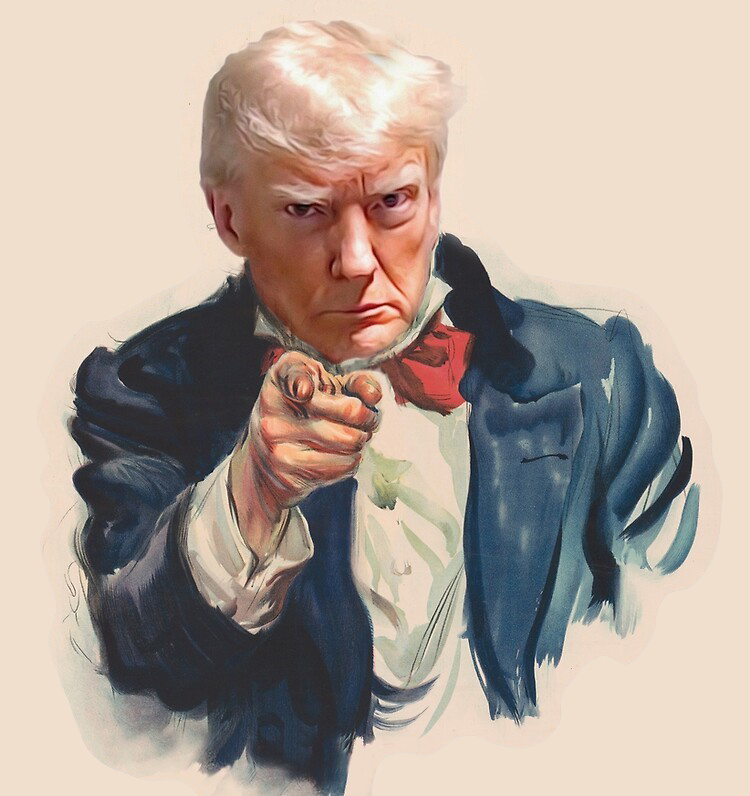Your cart is currently empty!

The Resurgence of Classical Liberalism
Organic Movement or Engineered Strategy?
Over the past few decades, classical liberalism has reemerged as a compelling framework for those seeking an alternative to the deeply polarized cultural narratives and institutional overreach that define the modern era. With its emphasis on individual rights, limited government, and free markets, classical liberalism offers a sharp contrast to the collectivist ideologies shaping many cultural and institutional spheres today.
However, this revival prompts a critical question: Is this resurgence an organic response to societal and cultural destabilization, or is it part of a broader, engineered strategy—a calculated piece of a larger destabilization play?
Classical Liberalism as an Emergent Phenomenon
The cultural exhaustion brought about by identity politics, authoritarian tendencies, and institutional distrust may have naturally set the stage for the reemergence of classical liberal values. Destabilization, whether by design or circumstance, often yields unintended consequences. As people seek stability amidst chaos, classical liberalism, with its focus on autonomy and fairness, becomes an appealing ideological anchor.
The natural alignment of classical liberal ideals with historical American identity may explain why this resurgence feels both familiar and refreshing. Its revival appears to be a counterweight to the perceived excesses of collectivism, offering a stabilizing framework for those yearning for balance in an increasingly polarized landscape.
The rise of figures like Pat Buchanan, Ron Paul, Thomas Massie, Ron DeSantis and Robert F. Kennedy Jr., and many more, all of whom emphasize limited government and individual rights, reflects this resurgence in public and political discourse. Policies aimed at curbing centralization—such as legislation limiting federal overreach—further illustrate classical liberalism’s appeal.
This alignment, however, raises questions about whether such movements can remain organic or risk becoming co-opted for other purposes.
The White Hat Narrative: Controlled Opposition?
What if this resurgence is not an organic movement but a carefully managed counter-narrative designed to serve broader destabilization efforts?
Strategic Destabilization
The term “white hats” refers to individuals or groups perceived as fighting against corruption or authoritarianism. In this context, the resurgence of classical liberalism might be seen as a countermeasure to hyper-progressive ideologies, offering a palatable alternative that can fragment resistance into manageable factions. By framing classical liberalism as a “heroic” or “restorative” ideology, its proponents may inadvertently play into a larger strategy of controlled opposition.
Divide and Rule
Controlled opposition refers to movements or ideas allowed to flourish under a controlled framework to channel dissent in non-threatening directions. Promoting a resurgence of classical liberalism in this way could serve to diffuse revolutionary fervor into predictable and controllable avenues. Classical liberalism’s compatibility with existing systems of governance and finance makes it less threatening than more radical or revolutionary ideologies.
Real-World Example: The framing of classical liberalism as “dangerously adjacent” to far-right movements, as seen in media critiques of libertarian rallies or free speech advocates, demonstrates how controlled opposition narratives can be used to both delegitimize and contain the ideology.
Weaponizing Classical Liberalism
Even if the resurgence is not explicitly engineered, it can still be co-opted. For example, by framing classical liberalism as a “white hat” ideology, it could be tied to narratives that delegitimize grassroots movements. Controlled media framing might portray classical liberal ideals as fringe, outdated, or insufficiently radical to address systemic issues, thereby neutralizing their effectiveness.
Additionally, promoting classical liberalism without addressing structural imbalances—such as the disproportionate influence of financial elites—risks creating a false sense of empowerment. Individuals may feel as though they are reclaiming agency, while the deeper systems of control remain unchallenged.
Real-World Example: Public criticism of grassroots movements like the Tea Party or modern free speech initiatives as tools of corporate or elitist interests highlights how classical liberalism can be reframed to reduce its legitimacy.
Destabilization Through Complexity
Destabilization operations often rely on creating multiple, conflicting narratives to weaken societal cohesion. By simultaneously promoting hyper-progressive ideologies and the resurgence of classical liberalism, destabilizers could amplify polarization. This “chaos strategy” ensures a fractured public sphere, keeping citizens reactive and distracted.
The resulting confusion allows the real power players—whether they are banking cartels, intelligence agencies, or corporate elites—to assert control without significant opposition. The resurgence of classical liberalism, whether organic or engineered, fits neatly into this multipolar strategy.
Multipolar Actors and the Resurgence
The resurgence of classical liberalism is intertwined with broader geopolitical dynamics where multiple actors—China, Russia, U.S. intelligence agencies, and corporate interests—vie for influence.
China and Russia
While classical liberalism appeals to Western ideals, foreign actors like China and Russia could exploit cultural narratives surrounding its resurgence to undermine U.S. institutional cohesion. These narratives include the demonization of classical liberalism as fascism by individuals and institutions aligned with international finance and neoliberal policies, as well as its perceived cultural adjacency to extremist organizations.
By amplifying these divisive narratives, adversaries could exacerbate polarization within the U.S., framing classical liberalism as either regressive or dangerously radical. Additionally, narratives emphasizing individual liberty and government overreach could fragment American society further, making it more difficult to maintain unity and institutional stability. This fragmentation would create opportunities for foreign competitors to expand their influence on the global stage.
USSOCOM and Israel
If elements of USSOCOM and Israeli intelligence were involved in counter-coup efforts during the 2016 election cycle, promoting classical liberalism may have been a calculated move to bolster Western resilience. However, even this alliance could have unintended consequences, especially if its narratives are co-opted by competing interests.
Real-World Example: Allegations of foreign influence in U.S. elections—whether from Russia, China, or even allied nations like Israel—highlight the complex interplay between ideology, geopolitics, and strategic narratives.
Destabilization by Design or Byproduct?
If By Design
If the resurgence of classical liberalism is part of a controlled destabilization play, it may serve to weaken collective resistance by creating controlled opposition. While it offers an appealing alternative to collectivism and authoritarianism, its systemic compatibility ensures that it does not threaten entrenched power structures.
If Unintentional
If the resurgence is unintentional, it represents a unique opportunity for those who value individual liberty to reclaim cultural and institutional narratives. However, it remains vulnerable to co-optation and weaponization, particularly by factions that seek to divert or neutralize grassroots movements.
Conclusion: Stability or Further Chaos?
The resurgence of classical liberalism offers a ray of hope, serving as a necessary counterweight to polarization and authoritarian trends. This provides individuals with a renewed sense of agency, purpose and hope. However, like most movements riding the wave of populism, it risks being co-opted as part of a broader destabilization strategy, fragmenting opposition and maintaining the status quo.
Looking forward, classical liberalism’s fate depends on the vigilance of its proponents. They must critically evaluate the narratives surrounding its revival, challenge attempts at co-optation, and advocate for solutions that address systemic inequities. Whether this resurgence leads to lasting stability or further chaos will ultimately depend on the clarity of its vision and the resilience of its ideals.
Read More:
Exploring the nuances of this potential narrative and its broader implications requires engaging with resources that address classical liberalism, destabilization strategies, geopolitics, media narratives, and decentralization. Here’s a curated list of resources, including more related ItsChromo articles for further contemplation:
1. Classical Liberalism and Political Philosophy
- The Road to Serfdom by Friedrich Hayek
- On Liberty by John Stuart Mill
- The Constitution of Liberty by Friedrich Hayek
- The Demonization of Classical Liberalism
Explore how classical liberalism has been reframed and attacked in modern discourse. - The Left’s Neo-Liberalism vs. The Right’s Classical Liberalism
A comparative analysis of neoliberal and classical liberal approaches.
2. Destabilization and Hybrid Warfare
- The Sovereign Individual by James Dale Davidson and William Rees-Mogg
- The Foundations of Geopolitics by Alexander Dugin
- Propaganda by Edward Bernays
- The Anatomy of a Destabilization Campaign by RAND Corporation – Analyzes modern tactics of destabilization.
- The Neoliberal Playbook
An examination of the strategies and tactics underpinning neoliberal influence. - The Dangers of Neo-Liberalism
A critique of neoliberalism’s impact on culture, governance, and society.
3. Media Narratives and Manipulation
- Manufacturing Consent by Edward S. Herman and Noam Chomsky
- Trust Me, I’m Lying: Confessions of a Media Manipulator by Ryan Holiday
- Is Fascism Really Right-Wing?
Debunking the common misconceptions around fascism and political alignment. - Are Dog Whistles Real?
An exploration of coded language in political discourse.
4. Geopolitics and Multipolarity
- The Grand Chessboard by Zbigniew Brzezinski
- The End of the American World Order by Amitav Acharya
- The Belt and Road Initiative by Jeremy Garlick
- Carnegie Endowment for International Peace – Publishes in-depth analyses on multipolarity and geopolitics.
- Polarized
Understanding the forces driving cultural and political polarization in society.
5. Controlled Opposition and Co-optation
- Rules for Radicals by Saul Alinsky
- Covert Action by Ellen Ray
6. Critical Thinking
- Critical Thinking: A Beginner’s Guide by Sharon M. Kaye
- How to Think by Alan Jacobs
7. Economic and Institutional Critique
- What Real Economic Stimulus Looks Like
A breakdown of policies that genuinely stimulate economies without fostering dependency. - The Death of Academia
Examining the decline of academic institutions in favor of corporate-driven agendas. - Our Elites Are Obsolete
Analyzing the failures of current elites to adapt to modern challenges.
8. Social and Cultural Dynamics
- What Men Want from Society
A discussion of societal needs and expectations from a male perspective.
9. Think Tanks and Educational Institutions:
- Cato Institute (https://www.cato.org) – A hub for classical liberal thought and policy research.
- Mises Institute (https://mises.org) – Explores Austrian economics and classical liberal principles.
10. Decentralization and Alternatives
- A Decentralized Education System
Proposing a decentralized approach to education for greater adaptability and freedom. - Embracing Decentralization
Advocating for decentralization as a means to promote resilience and diversity. - An Alternative Economy
Exploring decentralized economic systems as viable solutions to centralization.

Leave a Reply